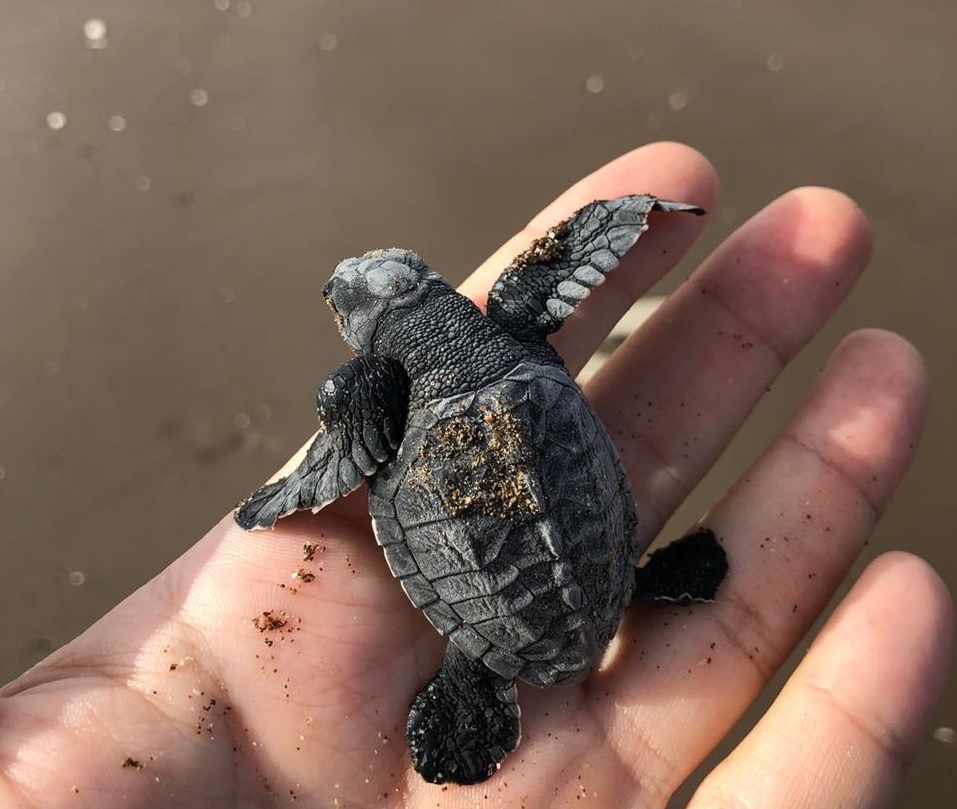São Paulo – The first-ever sighting of olive Ridley turtles was announced this Tuesday (16) by the Sharjah Environment and Protected Areas Authority (EPAA), Emirates News Agency (WAM) reported.
Classified as vulnerable by the International Union for the Conservation of Nature (IUCN), the Olive Ridley turtle is the second smallest and most abundant of the world’s six marine turtle species, according to WAM. The turtle’s average size and weight is 60 cm and 65 kg.
A hatchling was recently seen and photographed (pictured above) crawling towards the sea at the Kalba Kingfisher Retreat, a 500-hectare area in Alqurm Protected Area, within Sharjah’s east coast enclave of Khor Kalba, EPAA said.
Declared a natural reserve in 2012 by Sharjah ruler Sultan bin Muhammad Al Qasimi, Kingfisher Retreat is home to one of the rarest birds in the world, the local subspecies of the Collared Kingfisher.
After getting sent a picture of the olive Ridley hatchling, the EPAA dispatched a team to seek evidence of nesting. “”The team located several tracks on the middle and upper part of the beach, leading them to conclude that multiple turtles did successfully hatch and made it to the sea,” EPAA chair Al Suwaidi told WAM.
Previously, only Green and Hawksbill turtles were known to breed in the Emirates. the Olive Ridley turtle is found in warm and tropical waters, primarily in the Indian and Pacific Oceans, but also in the Atlantic.
Total global population of annual nesting female olive Ridley turtles is “estimated to have fallen to around 2 million by 2004 and to around 850,000 by 2008,” according to WAM. Threats include “the collection of eggs, killing of adults on nesting beaches, incidental capture in fishing gear, vessel strikes and ingestion of marine debris.”
The species is known for synchronized nesting in large numbers – a phenomenon known as ‘arribada.’ The majority of the Indian Ocean olive Ridley turtle population nests on beaches in the Odisha (Orissa) area of India.
The olive Ridley is an endangered species in Brazil, according to the Ministry of Environment. These turtles build some 8,700 nests per season in the country, spanning the coast from southern Alagoas to Sergipe and Northern Bahia, according to Project Tamar.
Translated by Gabriel Pomerancblum




